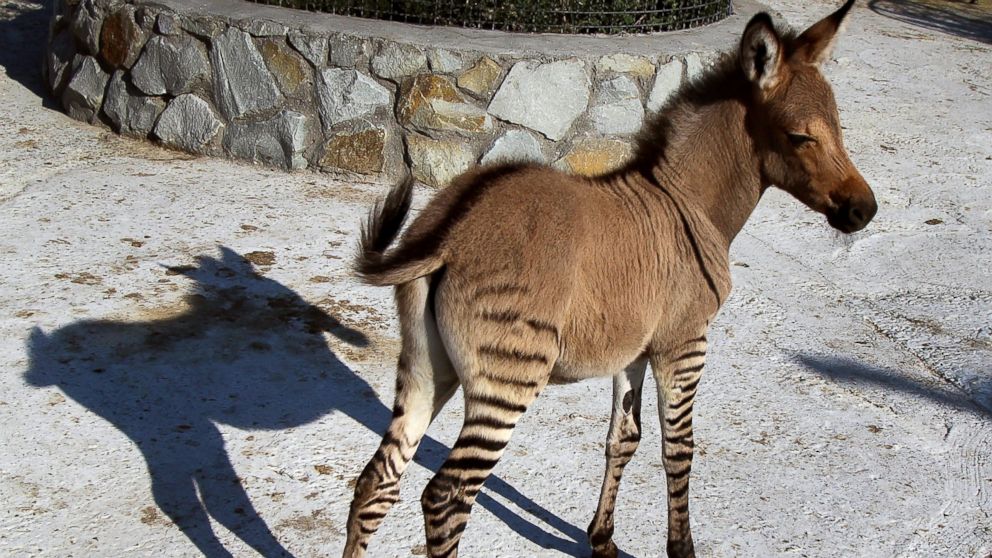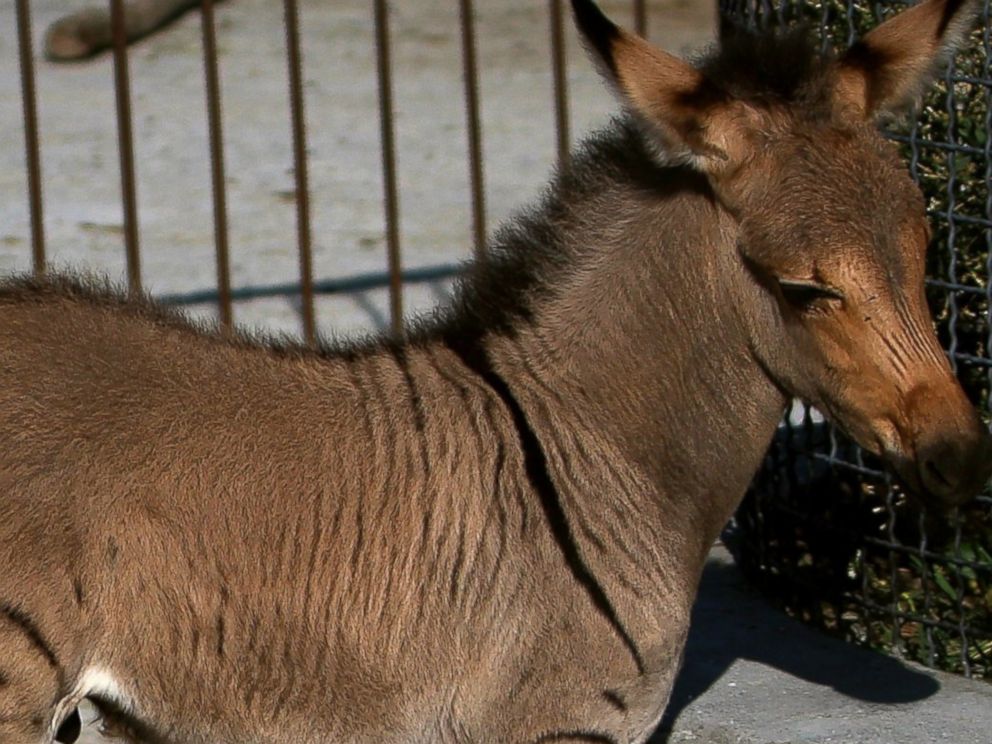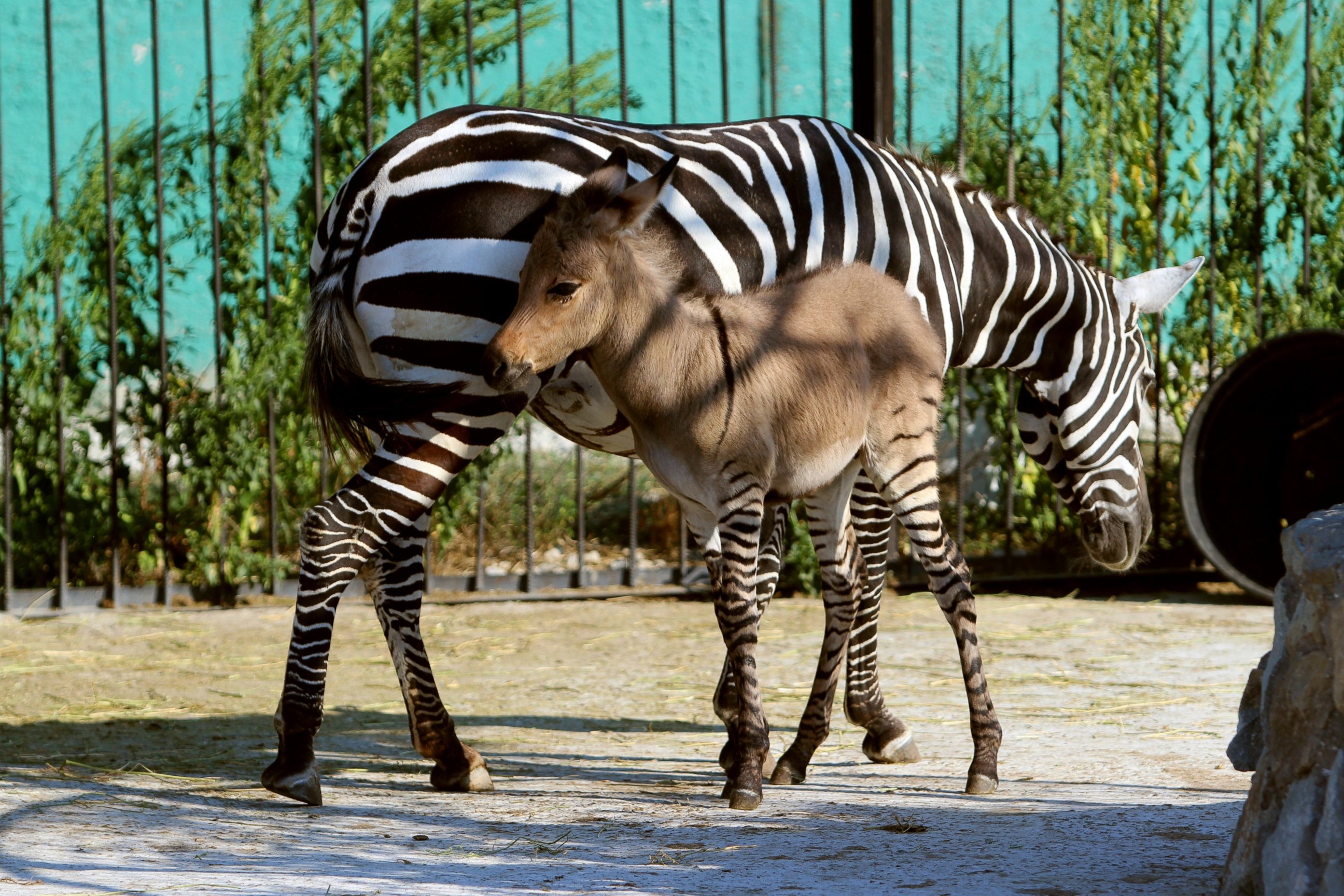Introducing the Latest Zonkey: Zebra/Donkey Mix
The cross-breed that's controversial but adorable.

— -- A zoo in Crimea has welcomed a new addition to the family -- a “zonkey.” The zebra and donkey mix is an unusual but adorable sight, donning the head and torso of a donkey and the legs of a zebra.
The zonkey, one of a variety of “zebroids,” was born last week at the Taigan zoo park in southern Crimea, global news agency AFP reported. The zonkey was named “Telegraph,” after a local newspaper, by keepers at the zoo.

“Telegraph is very popular with visitors,” zoo director Oleg Zubkov told AFP of the rare cross-breed, explaining that that the zonkey came about after he moved the zoo’s only zebra -- a female -- into an enclosure with other several hooved animals to keep her from getting lonely.
“She really liked the donkey,” Zubkov told AFP. “As a result of their affection for one another we’ve gotten Telegraph.”

Though the zonkey is a popular attraction for visitors, some critics do not agree with the practice of cross-breeding in zoos.
“Such things don’t happen in civilized zoos, but can occur at private zoos or on farms,” said Anna Kachurovskaya, a spokeswoman for the Moscow Zoo, according to AFP. “Zoos are for preserving wild species. That is one of their most important goals.”




